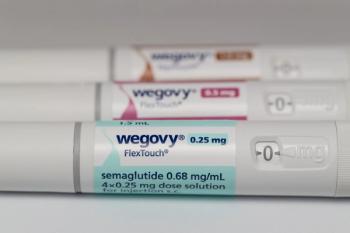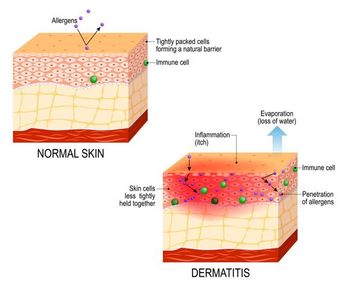
Preseptal Cellulitis
Rapid swelling and redness of a 13-month-old child's right upper eyelid prompted his parents to seek medical care for the infant. The parents reported that the child was slightly more fussy than usual and had no history of trauma.
Rapid swelling and redness of a 13-month-old child's right upper eyelid prompted his parents to seek medical care for the infant. The parents reported that the child was slightly more fussy than usual and had no history of trauma.
The afebrile patient had no discharge from the right eye, but diffuse periorbital and eyelid edema with erythema were evident. The area was warm to the touch; manipulation of the region caused the child to cry. There was no proptosis or restriction in motility. The patient did not have an afferent pupillary defect, and no disc edema was noted in the funduscopic examination.
Preseptal cellulitis was diagnosed. This condition can result from skin trauma, such as a laceration or an insect bite. Usually, the offending organism is Staphylococcus aureus or a β-hemolytic streptococcus. If the causative organism is either Haemophilus influenzae or Streptococcus pyogenes, a middle ear infection or an upper respiratory tract infection may be the underlying cause. Occasionally, preseptal cellulitis can result from an acute hordeolum or dacryocystitis.
It is imperative to differentiate preseptal cellulitis from the more severe orbital cellulitis, which can cause significant morbidity and even mortality. Orbital cellulitis involves a bacterial infection of the lid tissues that are anterior and posterior to the septum orbitale. The patient with this infection often presents with eyelid swelling, erythema, pain, proptosis, reduced vision, diplopia, fever, and an afferent pupillary defect.
This patient was admitted to the hospital; intravenous cefuroxime was initiated. Tobramycin ointment was applied to the right eye 4 times a day. After 1 day of treatment, the edema of the right upper eyelid had decreased markedly, the eye could be opened partially, and there was no exudate. The patient continued to improve and was discharged 3 days later. Oral antibiotics and a topical tobramycin solution were prescribed.
Newsletter
Enhance your clinical practice with the Patient Care newsletter, offering the latest evidence-based guidelines, diagnostic insights, and treatment strategies for primary care physicians.

































































































































































































































































































